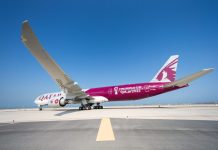A flag carrier airline is an airline which is subsidised or owned by the country in which they are registered. The airline often seeks preferential rights or privileges by the government for international operations.
In the past, the term national airline or national carrier was known to be airlines which were owned by the government, and therefore associated with the national identity of the country.
The video below summarises the flag carrier airlines, with the country that they are owned by and/or represent.
However, these days, it can refer to any airline with a strong connection to its home country, regardless of if it is government-owned. Therefore, not all flag carriers are owned by the government, as many have become private companies.
Flag carriers hold a certain amount of significance in the aviation industry, in terms of both financially and symbolically. Previously, the airlines that were owned by the government were considered great for international trade and national defence.
Some passengers will still opt to fly with their national flag carrier for the sense of pride that it gives them when they see the familiar tail of the aircraft on the runway. Also, some passengers will sometimes choose to fly with flag carriers over other airlines, due to the image that they are safer and less likely to encounter financial difficulties.
Why does the USA not have a flag carrier?
The USA used to have an unofficial flag carrier, Pan American World Airways, from 1927. However, in 1991, the airline experienced bankruptcy and so ceased operations. This also coincided with the deregulation of airlines in 1978, which meant airlines in the United States increased, meaning more competition of domestic and regional airlines.
Source – alternativeairlines.


















